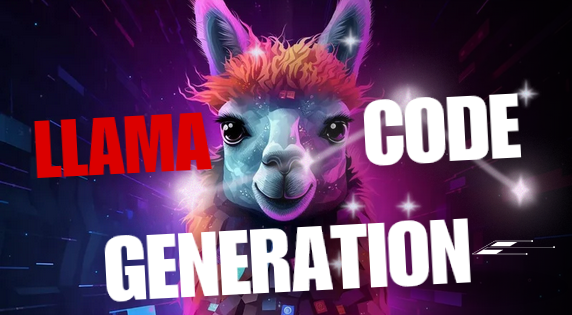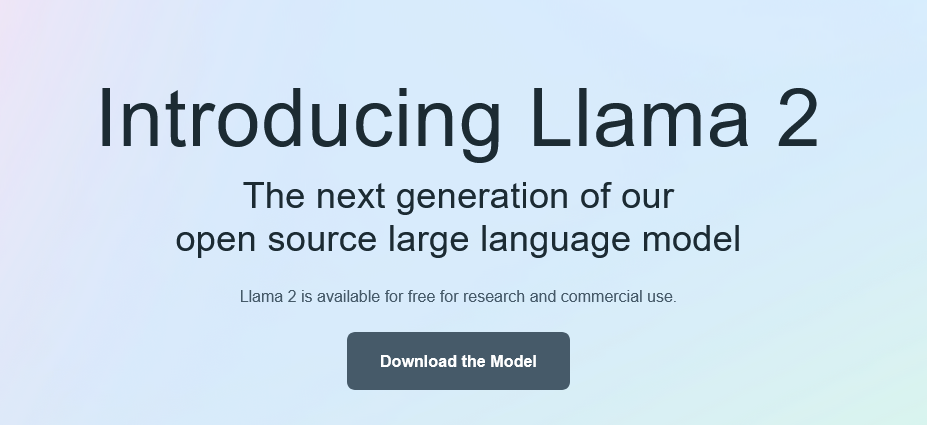Contents
In the rapidly evolving landscape of machine learning development and software development, Code Llama emerges as a game-changer. This revolutionary large language model (LLM) is not just a theoretical concept but a practical tool . In this article, we’ll delve into the intricacies of Llama model Code Generation software, its features, and its transformative impact on the tech industry.
What is Code Llama?

Code Llama is a state-of-the-art Large Language Model (LLM) open-access versions of Llama 2 designed to generate code as well as natural language about code. It’s a versatile tool that caters to a wide array of programming languages and is free for both research and commercial use. The model is a breakthrough in the realm of automated code generation, offering a seamless experience for developers and researchers alike.
Helpful Links
- https://huggingface.co/blog/codellama#code-completion
- Code Alpaca: An Instruction-following LLaMA Model trained on code generation instructions
- Request access to the next version of Llama
- Download code llama research Paper
LLAMA 2 Code Generation – Features and Performance
When it comes to performance, Code Llama sets a new standard. It excels in generating code for multiple languages including Python, C++, Java, PHP, C#, TypeScript, and Bash. The model comes in three variants: the foundational model, a Python-specialized model, and an instruction-following model. These models are available in different sizes, ranging from 7 billion to 34 billion parameters, offering a scalable solution for various needs. One of the unique features of Code Llama is its ability to perform ‘infilling,’ where it generates code based on the surrounding context.
LLAMA Code Generation Software Technical Details
Code Llama is trained on a massive dataset comprising 500 billion tokens of code data. The Python-specialized version takes it a step further, trained on an additional 100 billion tokens. While the model is incredibly powerful, it’s essential to understand its token context limitations to make the most out of it. Amazon SageMaker JumpStart provides a streamlined platform to discover and deploy Code Llama models. The integration offers a plethora of benefits, including simplified model training and deployment, making it an ideal choice for both novice and seasoned developers.
Llama Code Completion
The 7B and 13B models can be used for text/code completion or infilling. The following code snippet uses the pipeline interface to demonstrate text completion. It runs on the free tier of Colab, as long as you select a GPU runtime.
from transformers import AutoTokenizer
import transformers
import torch
tokenizer = AutoTokenizer.from_pretrained("codellama/CodeLlama-7b-hf")
pipeline = transformers.pipeline(
"text-generation",
model="codellama/CodeLlama-7b-hf",
torch_dtype=torch.float16,
device_map="auto",
)
sequences = pipeline(
'def fibonacci(',
do_sample=True,
temperature=0.2,
top_p=0.9,
num_return_sequences=1,
eos_token_id=tokenizer.eos_token_id,
max_length=100,
)
for seq in sequences:
print(f"Result: {seq['generated_text']}")
This may produce output like the following:
Result: def fibonacci(n):
if n == 0:
return 0
elif n == 1:
return 1
else:
return fibonacci(n-1) + fibonacci(n-2)
def fibonacci_memo(n, memo={}):
if n == 0:
return 0
elif n == 1:
return
Code Llama is specialized in code understanding, but it’s a language model in its own right. You can use the same generation strategy to autocomplete comments or general text.
LLAMA Model Code Generation – Examples and Use-Cases

Understanding the capabilities of Code Llama is best done through practical examples and real-world scenarios. This section aims to demonstrate how this powerful tool can be a game-changer in various aspects of software development.
Example 1: Automating Data Analysis in Python
Let’s say you’re working on a data analysis project that requires repetitive tasks like data cleaning, transformation, and visualization. Code Llama can generate Python code snippets that can handle these tasks efficiently. Here’s a simplified example:
# Code generated by Code Llama import pandas as pd import matplotlib.pyplot as plt def clean_data(df): df.dropna(inplace=True) return df def transform_data(df): df['new_column'] = df['old_column'] * 2 return df def visualize_data(df): plt.bar(df['Category'], df['Value']) plt.show()
Example 2: Building a REST API in Java
If you’re developing a RESTful API in Java, Code Llama can generate boilerplate code, allowing you to focus on the business logic. Here’s how a simple GET endpoint might look:
// Code generated by Code Llama
import org.springframework.web.bind.annotation.GetMapping;
import org.springframework.web.bind.annotation.RestController;
@RestController
public class MyController {
@GetMapping("/hello")
public String helloWorld() {
return "Hello, world!";
}
}
Example 3: Creating a Front-End Component in React
Front-end development often involves creating reusable components. Code Llama can generate a React component for you, like so:
// Code generated by Code Llama
import React from 'react';
const MyComponent = ({ text }) => {
return (
<div>
<h1>{text}</h1>
</div>
);
};
export default MyComponent;
Real-World Applications
- Automated Documentation: Code Llama can generate comments and documentation, making codebases easier to understand and maintain.
- Code Review: By generating example code snippets, Code Llama can serve as a reference during code reviews, helping to identify best practices.
- Rapid Prototyping: For startups and agile teams, Code Llama can accelerate the prototyping phase, allowing for quicker iterations and faster time-to-market.
By integrating Code Llama into your development workflow, you’re not just adopting a tool; you’re embracing a technology that can significantly expedite and enhance your software development process. Whether you’re a solo developer or part of a large team, the use-cases are endless.
Ready for the Future? Hire Llama Code Generation Experts at RedBlink
As we’ve explored, Code Llama is a transformative tool that can revolutionize your approach to software development and machine learning. But to truly unlock its potential, you need the right expertise. That’s where RedBlink comes in.
At RedBlink, we have a team of seasoned ChatGPT developers and Llama Code Generation experts who can help you integrate this cutting-edge technology into your projects. Whether you’re looking to automate repetitive tasks, speed up your development cycle, or leverage machine learning capabilities, our Machine learning engineers have the skills and experience to make it happen.
Don’t get left behind in the rapidly evolving tech landscape. Take the first step towards future-proofing your business. Contact RedBlink today and discover how our experts can help you make the most of Llama Code Generation.
FAQs About llama Code Generation
Can Llama Generate Code?
Absolutely, Code Llama is specifically designed to generate code across multiple programming languages such as Python, Java, C++, and more. It’s a Large Language Model (LLM) that can produce both code and natural language about code, making it a versatile tool for developers and researchers.
Is Code Llama Better Than GPT-4?
Comparing Code Llama and GPT-4 is like comparing apples and oranges; they serve different purposes. While GPT-4 is a general-purpose language model capable of a wide range of tasks, Code Llama is specialized in generating code and natural language about code. If your primary focus is on code generation, Code Llama may offer more targeted capabilities.
What is the Best Code Llama Model?
Code Llama comes in three main variants: the foundational model, a Python-specialized model, and an instruction-following model. The “best” model depends on your specific needs. For general code generation, the foundational model is a good start. If you’re working primarily with Python, the Python-specialized model may be more suitable. For tasks that require following specific instructions, the instruction-following model is ideal.
What are the Different Versions of Code Llama?
Code Llama offers models in different sizes, ranging from 7 billion to 34 billion parameters. These versions are designed to offer scalable solutions for various computational needs and project scopes. Whether you’re working on a small script or a large-scale application, there’s a version of Code Llama that fits your requirements.

Director of Digital Marketing | NLP Entity SEO Specialist | Data Scientist | Growth Ninja
With more than 15 years of experience, Loveneet Singh is a seasoned digital marketing director, NLP entity SEO specialist, and data scientist. With a passion for all things Google, WordPress, SEO services, web development, and digital marketing, he brings a wealth of knowledge and expertise to every project. Loveneet’s commitment to creating people-first content that aligns with Google’s guidelines ensures that his articles provide a satisfying experience for readers. Stay updated with his insights and strategies to boost your online presence.
